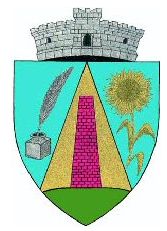Constantin Daicoviciu: Difference between revisions
Knorrepoes (talk | contribs) m (Text replacement - "↵↵'''" to "'''") |
Knorrepoes (talk | contribs) m (Text replacement - "{{ro}}'''" to "'''") |
||
| Line 1: | Line 1: | ||
''' {{uc:{{PAGENAME}}}} ''' | |||
District/county (județ) : [[Caraș-Severin (county)|Caraș-Severin]] | District/county (județ) : [[Caraș-Severin (county)|Caraș-Severin]] | ||
Revision as of 13:23, 11 February 2024
CONSTANTIN DAICOVICIU
District/county (județ) : Caraș-Severin
Official blazon
Un scut triunghiular cu marginile rotunjite. În câmp albastru, în dreapta, se află o călimară cu pană, de argint, iar în stânga, o tulpină de floarea-soarelui, de aur. În centrul scutului, într-un triunghi, este așezat, pe o terasă verde, un coș de cărămidă roșu, plasat în câmp de aur. Scutul este trimbrat de o coroană murală de argint cu un turn crenelat.
Origin/meaning
The arms were officially granted on May 5, 2005.
The inkwell and the silver pen refer to the famous historian and archaeologist, born here, Constantin Daicoviciu.
Sunflower represents the richness of the area, and its cultivation, the main occupation of the inhabitants.
The brick tower is the traditional occupation, namely the burning of limestone in order to obtain lime.
The mural crown with a crenellated tower means that the locality has the rank of commune.
Contact and Support
Partners:
Your logo here ?
Contact us
© since 1995, Heraldry of the World, Ralf Hartemink 
Index of the siteLiterature: image from the decree 409/2005










